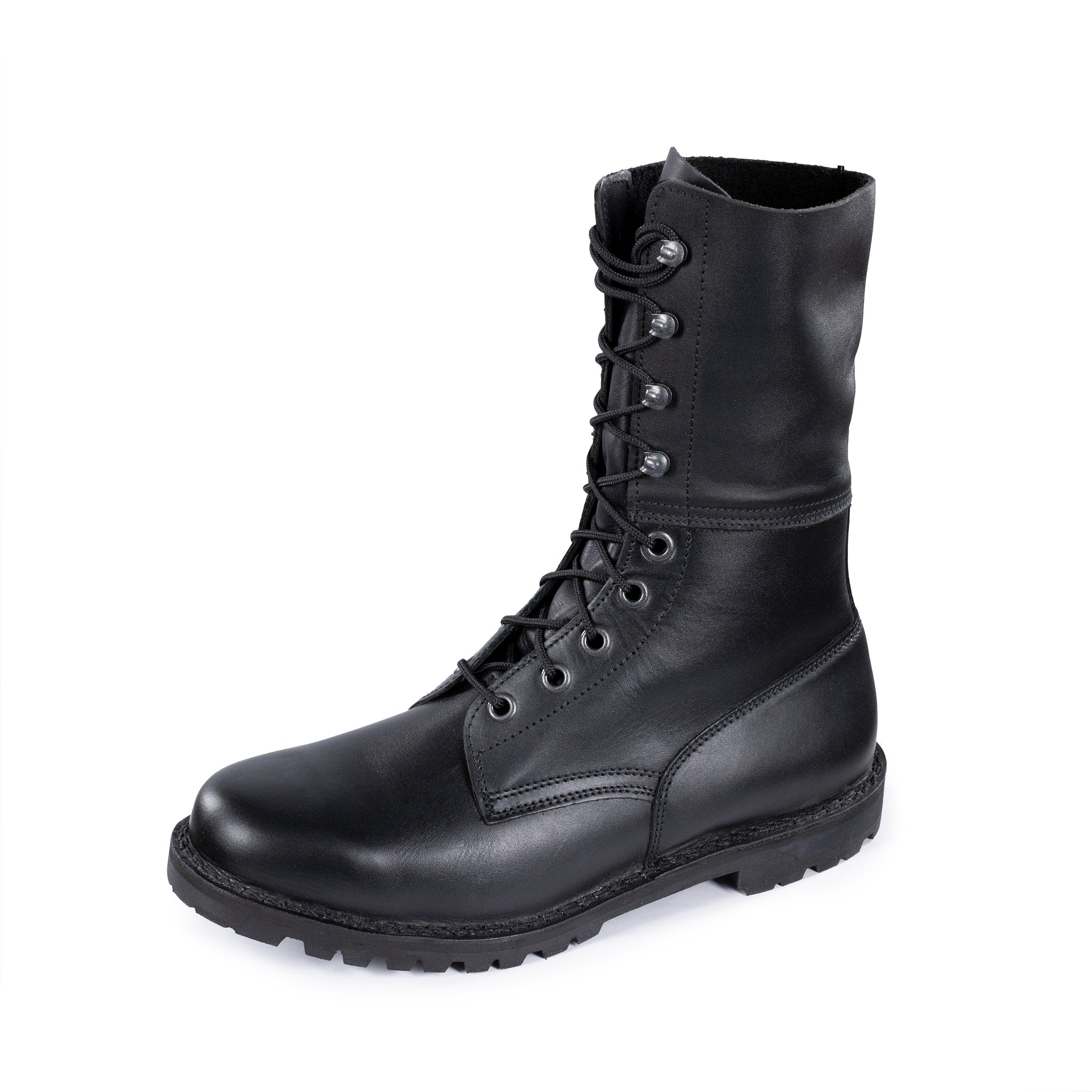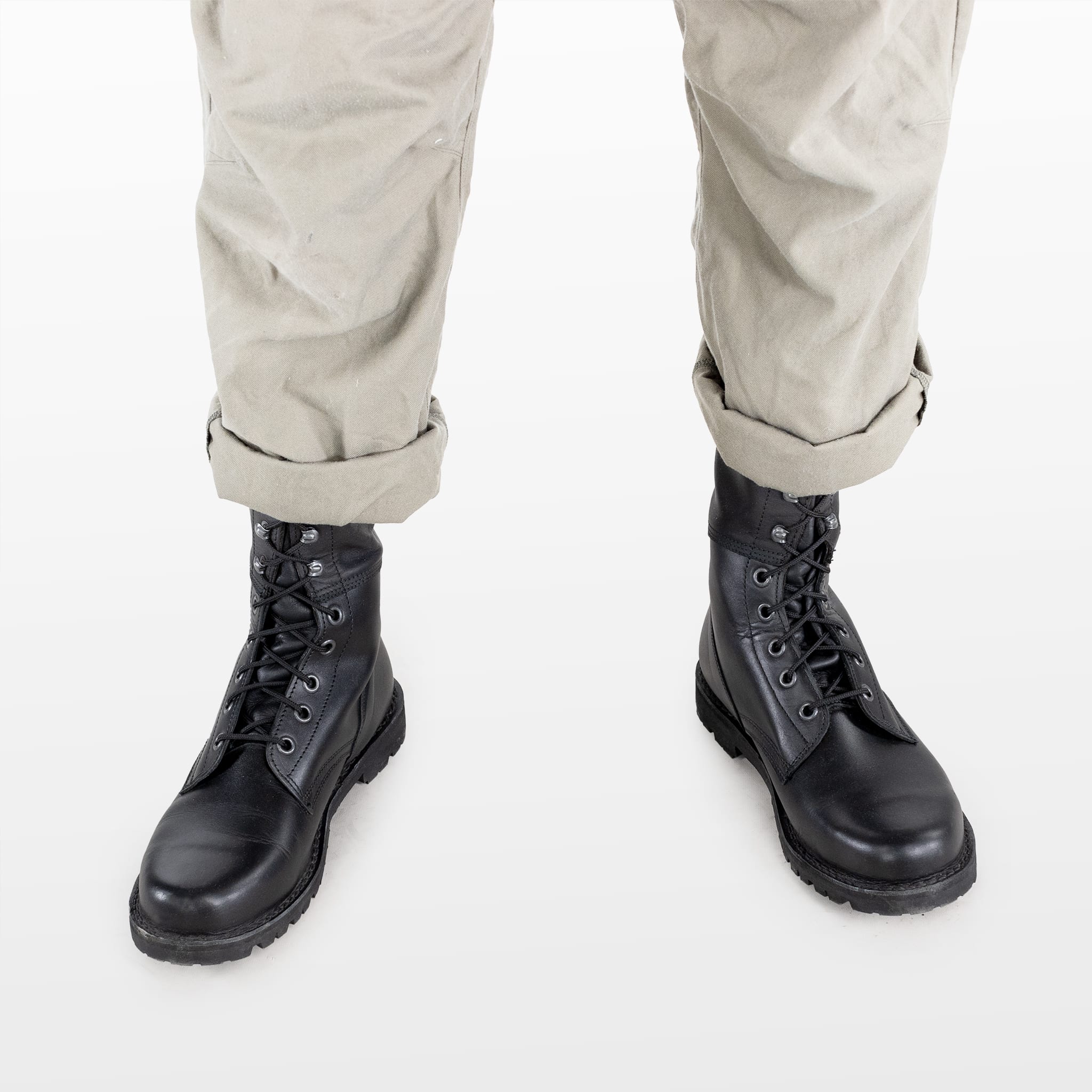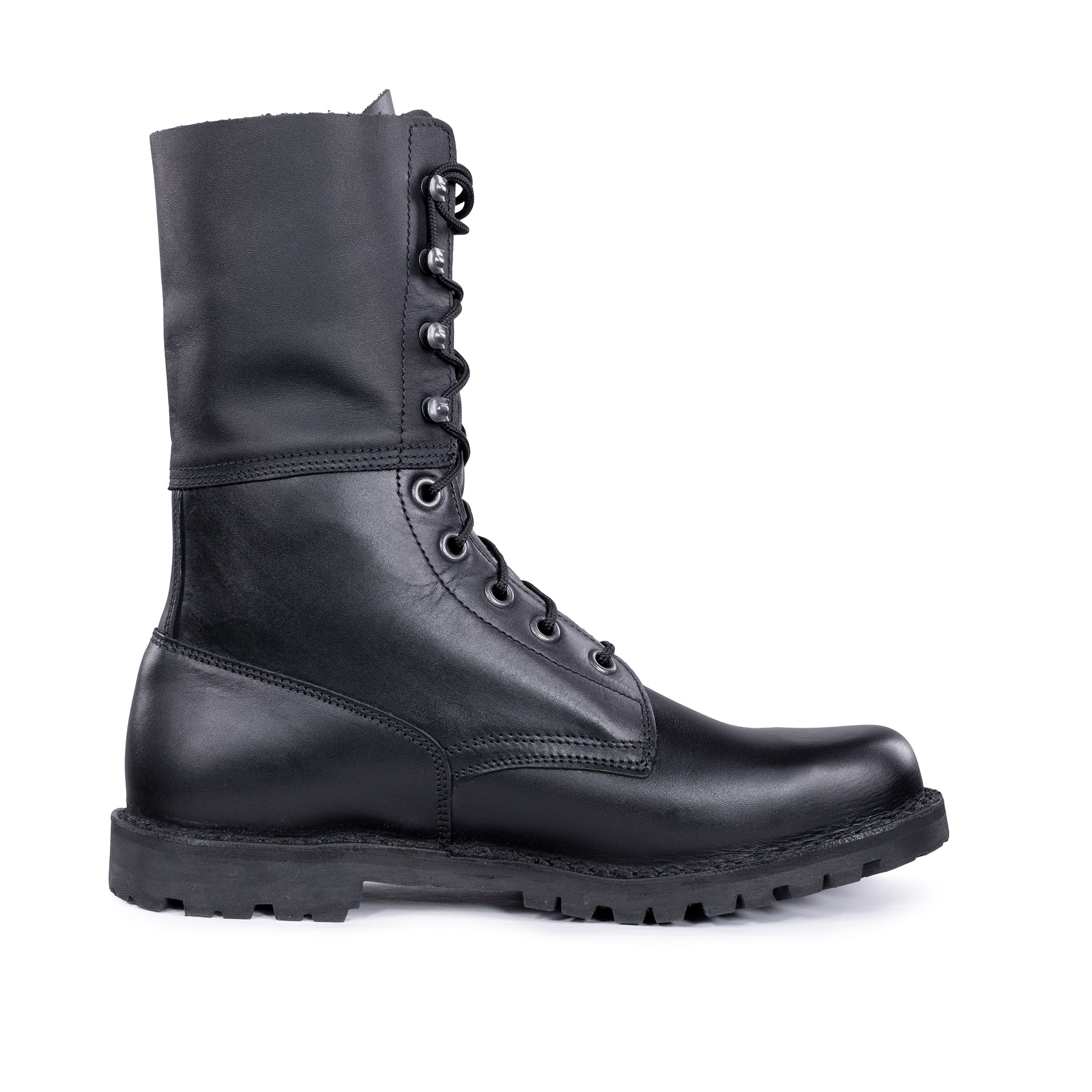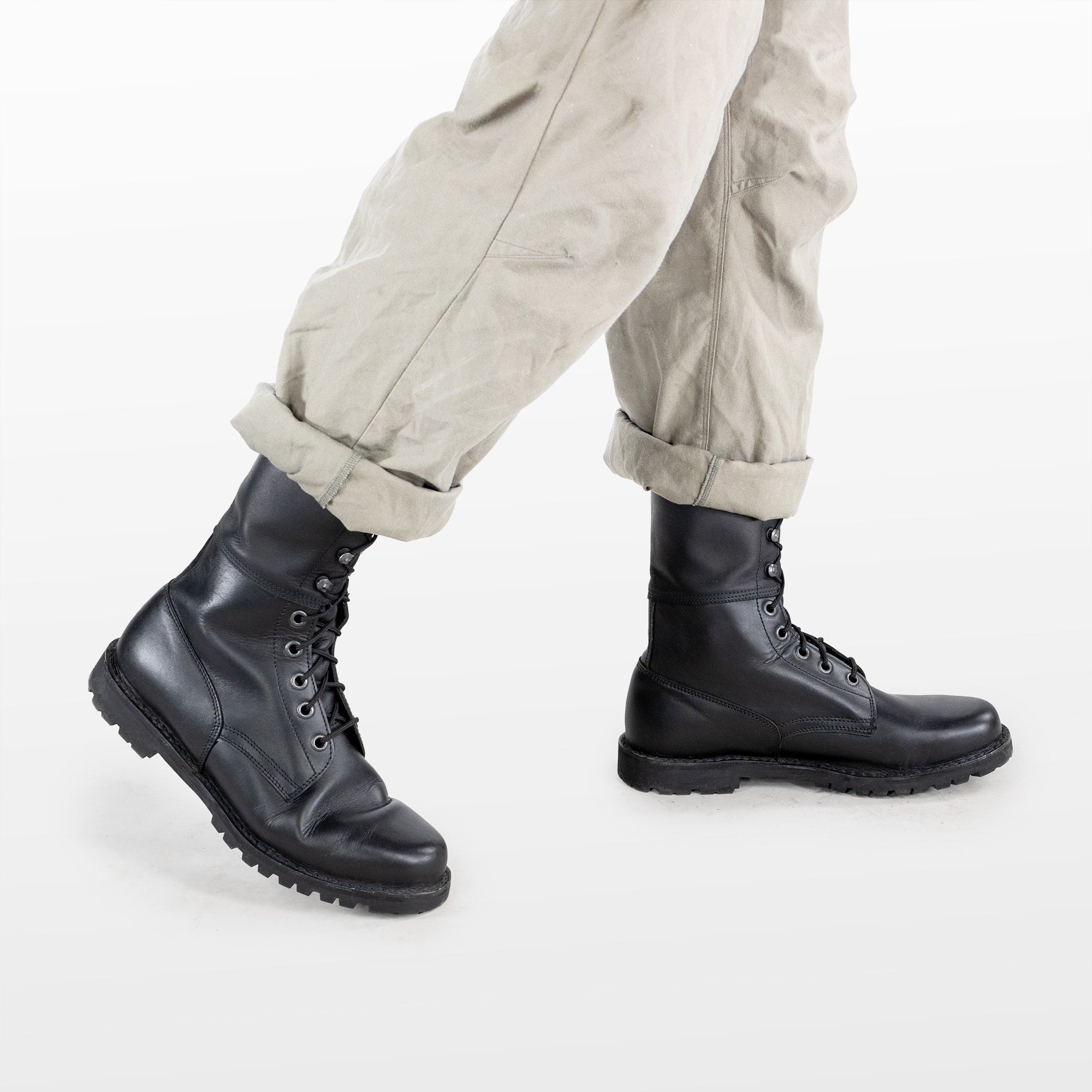With Soviet occupation over, fledgling Austria was in an extremely precarious position.
The Soviet promise of independence was tenuous at best, and Austrian territory sat on major invasion routes between NATO and the Warsaw Pact. There was almost no likelihood of an unprovoked invasion from NATO, but if the Soviets decided to push to the river Rhine Austria would be a stepping stone. In this scenario, there was no doubt that NATO would counter attack. If the Bundesheer could last 7 days, there would be enough time for the French Army to reinforce the German border with Austria. But if the soviets rolled through in less than a week, NATO would be forced to use tactical nuclear weapons in Austria.
In 1975 the Bundesheer overhauled their 1950s WWII era equipment with the Anzug 75 system. The Anzug 75 uniform was well made and borrowed heavily from successful western designs like the US M65 jacket.
But the runaway star of the show was undoubtedly the boots.
Derived from the American 'Russet' combat boot, Austrian Light Feldschuh were a dramatic departure from the orthodox. Unlike their 1970s German equivalents, Austrian boots were made with soft leather interiors and high-traction Vibram-style soles. They broke in quickly and didn't require gaiters in most conditions.
They were an immediate success.
Thanks to mandatory service, almost 5 generations of Austrian men have worn the M75 Feldschuh. Over the years it has accumulated a huge following inside Austria. In fact, the Bundesheer even changed the rules to allow conscripts to keep their pair after service. It's such a good boot that the Austrian surplus market competes with established fashion brands.
Ever since Austria introduced their 'take home' policy in 2017, supplies of surplus Feldschuh have been drying up. Over the last two years, we've been exploring the possibility of bringing these boots back as a new production item. Unlike other projects we've tackled, these boots are still actively issued.
That made things easier, but it was still something of a challenge to find the right manufacturer for the job. Especially so, with COVID and the war in Ukraine complicating matters. After a lot of back and forth, we are very pleased to offer a brand-new Austrian 'Paratrooper' for sale.
Specs
- Made in Croatia for the Austrian Military
- 2mm-thick full-grain cowhide
- 10" tall, covering and supporting the entire ankle
- Half Gusseted tongue
- Easy to shine and polish, hides dirt and stains
- Abrasion resistant laces
- Rust resistant metal hooks and loops
- Reinforced heels and toes
- Removable insole
- Slip reducing Lugged outsole resistant to oil, fuels, and acids.
Size Guide
Austrian Boots are original sized on the EU sizing system, and come in two widths.
We have translated this system to US sizes for convenience.
For women, all our boots are sized for men. Please use the below table for conversions for your size.
Please don't hesitate to contact customer service if you need assistance.
Men's Shoe Sizes Length
| US Size
|
EU Size |
| 3 |
36 |
| 4 |
37
|
| 5 |
38
|
| 6 |
39 |
|
7 - 7.5
|
40
|
| 8 - 8.5 |
41 |
| 8.5 - 9 |
42 |
| 9.5 - 10 |
43
|
| 10.5 - 11 |
44
|
| 11.5 - 12 |
45
|
|
12.5
|
46 |
|
13
|
47 |
|
14
|
48 |
|
15
|
49 |
|
16
|
50 |
Shoe Width
| Description
|
US |
EU |
|
Standard for Men
Wide for Women
|
D
|
F
|
|
Standard for Women
Narrow for Men
|
B
|
H
|
Women's Shoe Size Length Conversion
Rule of thumb for Men's to Women's shoe size conversions is adding 1.5 to the Men's size.
| Women's US Equivalent |
Mens US |
| 4.5 |
3 |
| 5.5 |
4
|
| 6.5 |
5 |
| 7.5 |
6 |
|
8.5 - 9
|
7 - 7.5
|
| 9.5 - 10 |
8 - 8.5 |
| 10 - 10.5 |
8.5 - 9 |
| 11 - 11.5 |
9.5 - 10
|
| 12 - 12.5 |
10.5 - 11
|
| 13 - 13.5 |
11.5 - 12
|
14
|
12.5 |
14.5
|
13 |
15.5
|
14 |
16.5
|
15 |
17.5
|
16 |

















